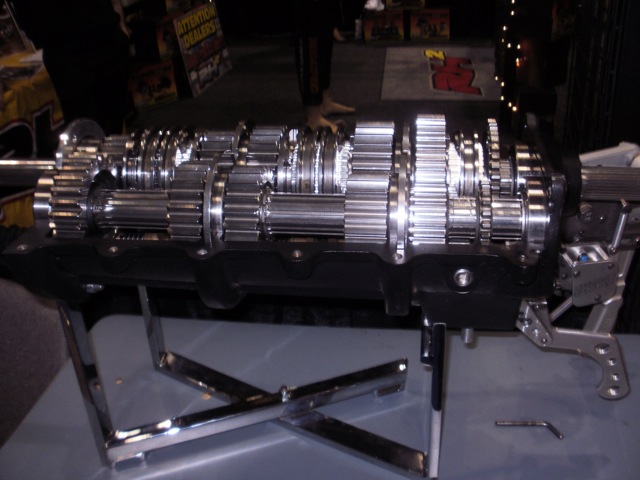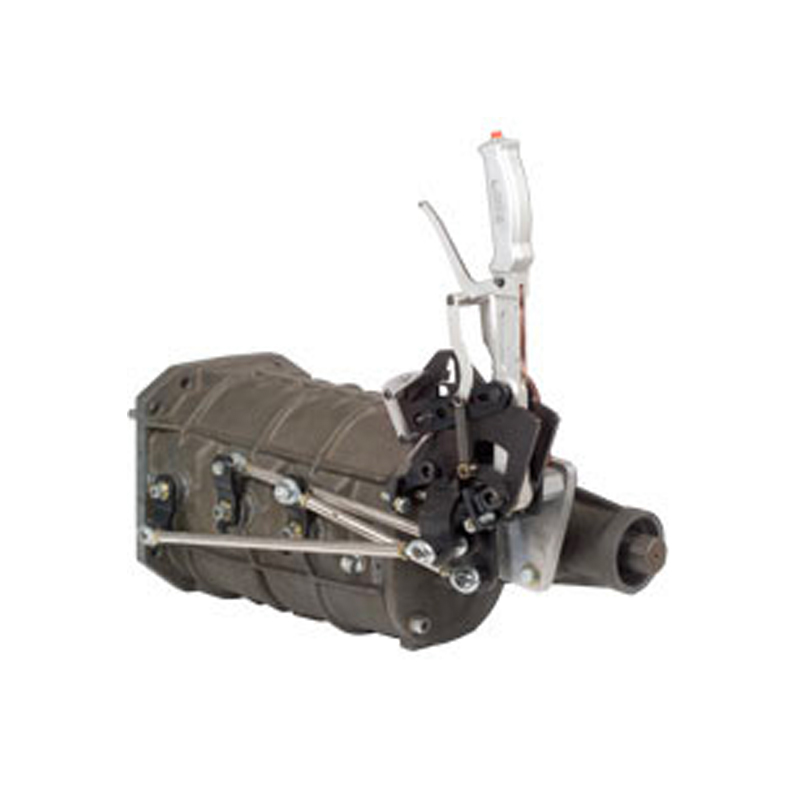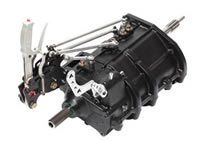
When the shift lever is moved to the second gear position, only the slider half-facing second gear moves to engage that gear. When the shift lever is pulled into first gear, both slider halves move to engage the first gear faceplate. The engagement lugs on each half are ramped on the deceleration side. The GF-5R clutchless transmission utilizes split, spring-loaded sliders. With clutchless gearbox, it isn't necessary to back off the gas pedal or release the clutch even for a split second - when making a gear change. The transmission shifts very similar to a motorcycle in the way it operates inside. This is a significant improvement over the old Pro-Shifted design engagement. Once you've pulled the shift handle far enough to get out of gear, you don't need the clutch disengaged to engage the next gear. Wide-open throttle shifting requires disengaging the clutch just long enough to release the load to engagement lugs. When the engagement lugs on the slider find the "windows" between the engagement lugs on the gear, the gear is engaged.Ĭlutch assisted transmissions can be upshifted and downshifted quickly at ANY engine RPM! Part-throttle shifts can be accomplished without the use of the clutch simply by slightly letting off on the gas, ("blipping" the throttle), while moving the shift handle. As the gear lever is moved, the slider moves toward the engagement plate on the face of the gear. Rather than having engagement teeth or lugs placed around the circumference of a synchro cone, the face-tooth engagement system has engagement lugs on the adjoining faces of the gear and slider.

Anyone who has tried power shifting a synchronized transmission at 7000 RPM should now understand why it would not shift! Since the brass ring acts as a "brake", the ability to do its job is dependent on two factors: the weight of the rotating mass and the speed at which it turns. This principle works fine for everyday driving, but can become a nightmare when shifting high engine RPM's. Once the speed synchronization is complete, the slider can be pulled easily into engagement with the gear's synchro teeth. This action accelerates or decelerates the gear, depending on whether it is being upshifted or downshifted, up to the same speed as the slider. In turn, the ring is pushed against the speed gear synchro cone.


As a gear lever is moved, the engagement slider pushes three spring-loaded locking struts against a brass synchronizer ring. Synchronizers do what their name implies: they synchronize. While synchronized engagement is ideal for normal street driving and Pro-Shifted modifications were once adequate for drag strip applications, neither is optimum for today's street machines andall-out racecars. As opposed to using standard synchronizers or Pro-Shifted modifications, G-Force Transmissions has opted for a face-tooth design.


 0 kommentar(er)
0 kommentar(er)
